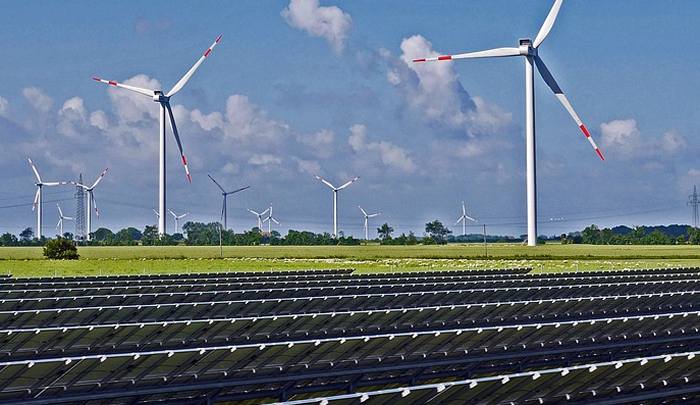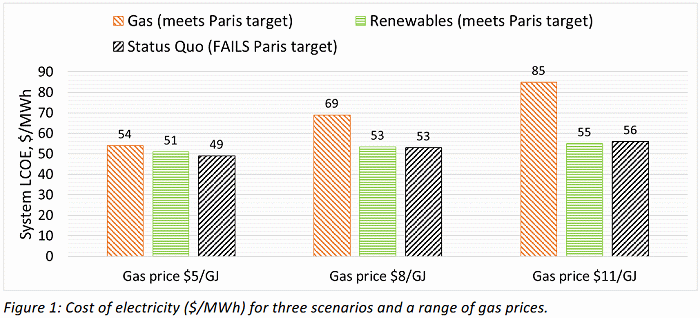
Image: hpgruesen
The cost of renewables is falling so rapidly that Australia’s Paris agreement target could be met with new wind and solar PV builds at zero net cost.
A study released this morning by Andrew Blakers, Matt Stocks and Bin Lu from the Australian National University (ANU) says Australia can reach emission levels of 26-28% below 2005 levels by 2030 “effectively for free”.
Electricity generation from new-build wind farms in Australia currently costs around A$60 per megawatt-hour, while solar power costs approximately A$70 per megawatt-hour – and both are forecast to decrease to around A$50 per MWh in the 2020’s.
“There are numerous reports of such prices (and lower) already being achieved in overseas locations that have similar wind and solar resources,” states the study report. “It would be surprising if such prices were not achieved in Australia by 2025.”
According to modelling of the all-in cost of electricity carried out by the researchers, renewables will be cheaper than:
- the cost of electricity from new-build coal generators
- the cost of electricity from existing gas generators
- the wholesale price in the National Electricity Market
This includes the cost of hourly balancing of the grid to retain the same current reliability level. In the renewables scenario, Snowy 2 contributes half the new storage required to balance the NEM, with the remainder coming from other pumped hydro sites, battery storage and demand management. This scenario also sees better interstate high voltage power lines in place costed in, which will reduce the probability of transmission failure.
Under the renewables scenario, coal would represent 9GW of generation capacity in 2030 and gas, 5GW.
All that’s required to achieve this is keeping up the current pace of renewables – around 3GW of wind and solar power capacity each year (1.5GW of each). The renewables scenario assumes the 2020 RET is met, and that new rooftop solar continues to be deployed after that year at a rate of 1 GW capacity annually.
“Continuing at this rate until 2030 will let us meet our entire Paris carbon target in the electricity sector, all while replacing retiring coal generators, maintaining high grid stability, and stabilising electricity prices,” state the authors.
This level would also see renewable energy meeting more than half of Australia’s electricity consumption by 2030.
“Meeting Australia’s Paris greenhouse commitment at zero net cost” can be viewed in full here (PDF).


 RSS - Posts
RSS - Posts



This is a much too coherent strategy to meet all our energy future needs including most importantly cost reliability and EMISSIONS.
Meanwhile mister Fraudband is extolling his win at last weeks COAG energy ministers meeting with the third best option the NEG-CON.